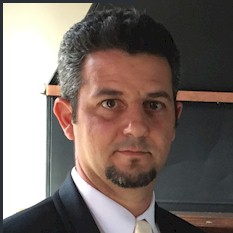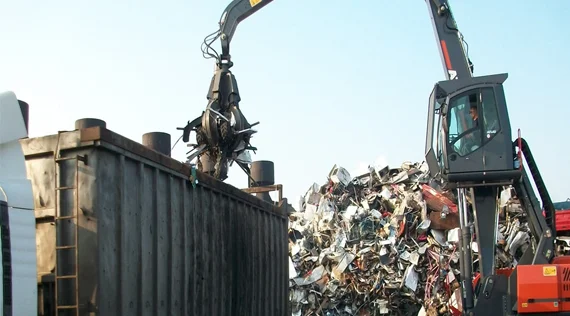New Report Questions Business Model of British Columbia Gold Mines
Mining News | 2024-05-10 14:11:00
Most of those companies in the region are publicly traded, and actually generate very little revenue.
SEATTLE (Scrap Monster): Gold mines near the British Columbia border are controversial in Alaska because of the potential for negative impacts to the environment and fisheries downstream. A nonprofit group called the Environmental Investigation Agency (EIA) released a report in January that found that these gold mines operate somewhat like a Ponzi scheme.
The report says mines are allowing day traders and Canadian taxpayers to assume most of the financial risk that comes with gold prospecting, while a much smaller group of shareholders reaps the rewards. KFSK’s Shelby Herbert has been following this story in Petersburg.
The following transcript has been lightly edited for clarity.
Ava White: Shelby, what does this report say about how these mining companies operate?
Shelby Herbert: The EIA is reporting that there’s basically a network of about 500 companies that have direct or indirect stakes in gold mining claims in the transboundary region. They use something called the prospect generator model, which is when junior mining companies acquire land packages with good prospects for gold, or other precious metals and minerals. Then they carry out the initial exploration work, to suss out the viability of the mine before the drilling gets started.
In order to pool resources and spread out the risk, they’ll then seek out joint-venture partnerships for the claims. These partnerships give a major or mid-tier miner the ability to earn interest in exchange for funding drilling.
This model is used by mining companies all over the world. But the authors of the report have noted that mining operations in the transboundary region operate like the prospect generator model on steroids.
Most of those companies in the region are publicly traded, and actually generate very little revenue. The EIA report found that a lot of the top 20 claim-holding companies in the transboundary watershed region operate at a deficit and generally have a negative trend in their stock price.
AW: So how do they make any money?
SH: Well, these companies certainly make money. But their small-time investors? That’s a different story.
According to the report, the companies in this network are largely funded by stock sales from small investors, day traders, non-professionals, folks like that. And then they’re also buoyed by tax incentives. There are several Canadian tax incentives that greatly benefit mining companies, like Flow-through Shares and the Mineral Exploration Tax Credit.
So, the model does turn a profit, even when they’re not turning out much gold. Owners and principal investors are making millions of dollars a year, and using it to drill hundreds of miles of new holes.
AW: How many of those mines actually yield gold?
SH: A fraction of a fraction. According to the Association for Mining Exploration, only about one in 10,000 exploration projects actually becomes a mine. And most of that risk falls to, like I said, small-time investors and Canadian taxpayers. That’s why the authors of this report are drawing a comparison to Ponzi schemes. I reached out to many of the heavy-hitters in the British Columbia mining network to get their reaction to this comparison, but they never got back to me.
AW: Are there any environmental concerns about simply drilling for gold? Even if the prospectors never find it?
SH: The report says that even the boreholes that don’t become mines could hurt the surrounding watershed. There isn’t a lot of published information on the direct environmental impacts of mining exploration. But a 2019 study by the environmental group, Center for Science in Public Participation, looked at the effects of exploration at the controversial Pebble Mine in northwestern Alaska, and it gives us a little insight. Researchers found elevated levels of aluminum, iron, and copper in surface water near drilling sites. And some of those exceeded water quality standards. Dissolved copper also happens to be neurotoxic to salmon, and potentially prevents them from navigating back to their home streams.
AW: And what do the mines mean for people downstream?
SH: It’s important to note that a lot of these mines are really close to watersheds that feed fish habitat. Take a look at where I’m at, here in Petersburg — Enduro Metals’ mining claims cover an area about the size of New York City. And about three quarters of that area is within three miles of rivers or streams, including the Iskut River — the Stikine River’s largest tributary, which feeds into the waters near where I am.
Several groups in Southeast Alaska are concerned about what pollution from the mines means for fish. That’s tricky to quantify, with other factors like climate change and bycatch at play here. But by many accounts, mines and fish don’t mix.
A study published in 2022 in the journal Science Advances found a consistent pattern of harm to salmon habitat and watersheds from British Columbia mines. Groups like SalmonState are concerned about declining populations of salmon, as well as hooligan and trout. And Indigenous people in Wrangell, Metlakatla, and Ketchikan have long talked about the changes they’ve seen in fish populations where these rivers meet the ocean.
Also, about 20 percent of the current claims that have been staked in the transboundary region are covered by glaciers. As those glaciers recede due to climate change, they’ll leave behind thousands of miles of new salmon streams. But the fish are in direct competition with the mining companies, who are waiting to dig into the ground.
AW: How are people in the fishing industry reacting to this?
SH: Commercial fishermen are some of the key players in campaigns to protect transboundary watersheds from mine pollution, like Salmon Beyond Borders. There are international treaties that govern this region, including the Boundary Waters Treaty and the Pacific Salmon Treaty.
Heather Hardcastle is the campaign advisor for Salmon Beyond Borders, which is one of the organizations that commissioned this report. She told me that commercial and sport fishermen, as well as subsistence users have been deeply involved with this issue and looking for change, looking for diplomacy, and looking for answers from the U.S. government.
AW: And what are Alaska politicians doing about this?
SH: U.S. Sen. Lisa Murkowski called on President Biden last fall to withhold his support for Canadian mines until both countries can establish watershed protections for this region.
But this has been a long, drawn out fight. For close to a decade, people in Southeast Alaska have been asking for a pause on transboundary mining activity until Indigenous peoples and communities in the region can establish enforceable international protections for the watersheds that lie below the mines.
Courtesy: www.alaskapublic.org
 By
By 